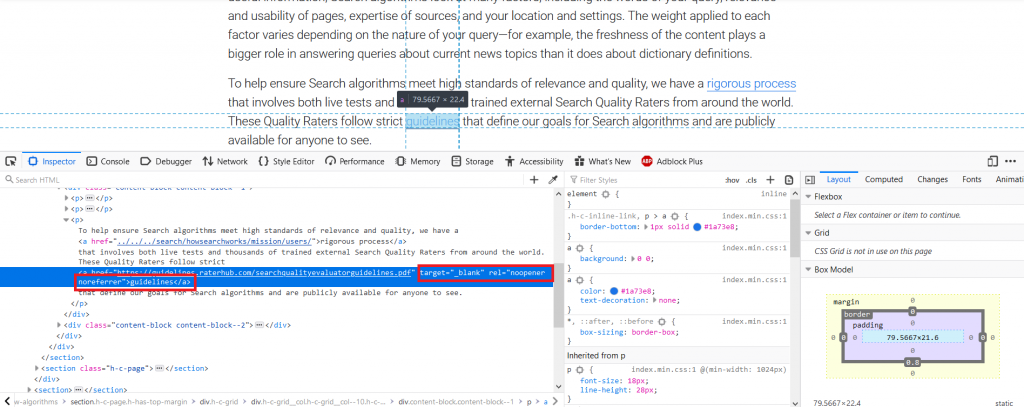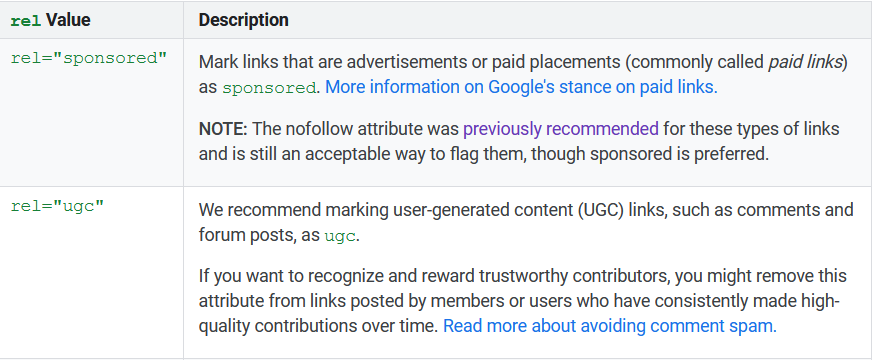SEO Link Attributes Explained
The state of link attributes remained pretty much the same for nearly 15 years. Ever since Google introduced more complexity to the situation back in March 2020, beginners only got more confused. Dofollow and Nofollow used to be the only two options not long ago. But, the situation’s not the same anymore so we’ll make sure the state of SEO link attributes is thoroughly explained in this article.
Google implemented more complexity to the Nofollow attribute in March. The UGC and Sponsored tags serve to accompany Nofollow and offer Google more information about the way people use links. We are going to take a deep dive into all of them below.
Dofollow
If content is generally considered as king in the SEO ecosystem then, the dofollow attribute is king for Link Building. These are the type of links that you want to get, that will help your website the most. The tag rel=”dofollow” tells the Google algorithm to follow the linked page in a new window.
When the crawler does this, the linked page will be indexed in Google. If the page is already indexed then, the information will be updated based on the new index info. This whole process transfers link juice from the linking site to the linked one. The link will appear in the site’s link profile, increasing its authority.

High authority and link juice are important for ranking. Google doesn’t acknowledge the importance of authority and links in the making up of the SERPs but strong correlations are indicating the contrary. It has been widely noticed that a site with a strong and relevant link profile is far more likely to gain high rankings. So, as a general rule of thumb, more dofollow links mean more traffic.
How to get them?
As mentioned above, these dofollow links have the highest market value. Getting them for free is not an easy task. Strategies such as guest blogger outreach, broken link building, and infographics can represent a viable option. However, they will take a long time to generate results as many people are unwilling to giveaway dofollow links for free. Purchasing them is against Google policies so try to stay away from that.
The best option and the one advised by Google is to create as much high-quality content as possible. These are in-depth articles that provide your readers with as much value as possible. Thick articles tend to be pushed to the top of the rankings organically by Google. The more views you get, the higher are your chances of getting good links for free, organically.
Nofollow
Google introduced the Nofollow concept 15 years ago to combat spam, and many other search engines soon followed. Before nofollow, sites were able to increase their rankings just by spamming the web while commenting on blogs or forms. This means that low-quality content was able to rise to the top in the detriment of a valuable one.
The nofollow tag is meant to give webmasters the option to discredit certain links from their site and minimize spam. This tag tells Google to ignore the linked sites altogether, and that’s why it was so successful at combating spam. This attribute also comes in handy when you want to link to a competitor without increasing its ranking.
If you run a link building campaign, you should stay away from anything other than dofollow. They won’t provide much SEO value and the resources needed to acquire them are the same. However, nofollow links can be good for diversity so that’s something you might want to consider.
Noopener and Noreferrer
Many beginners tend to confuse rel=”noopener” and rel=”noreferrer” with rel=”nofollow” because they look similar. But, this couldn’t be further from the truth.

These three attributes are completely different. Nofollow passes no link juice to the referred site. But noopener and noreferrer do pass link juice. They don’t negatively influence SEO since they are security attributes.
These tags are actually recommended to be used with dofollow since they prevent cross-site hacking. Through the JavaScript window.opener feature, a newly opened page can control its referring one. This means that if you’re linking to a website affected by malware, that site can steal data from you.
However, rel=”noopener” prohibits the new tab to control your site through window.opener while rel=”noreferrer” does something similar without even passing referring information. They are not the same as nofollow. They protect your site while still passing on link juice. Used together, they’d look like rel=”noopener noreferrer”.
March 2020 Update
The March 2020 nofollow update is meant to change things around a little. Whilst Google used to ignore nofollow altogether, things are a bit different now. Nofollow started being used as a hint which may or may not impact rankings. To give links even more diversity, the rel=”UGC” and rel=”sponsored” got introduced into the mix.
Since all of these three attributes are used as hints, Google is now able to gather data about the origin of the link and anchor text. This further helps the search engine to identify link schemes and combat unnatural behavior. This model allows Google to gain valuable data otherwise lost while still giving website owners the freedom to discredit certain links.
UGC
WordPress and certain forums used to automatically tag comments with the nofollow attribute. Now, this has been replaced by rel=”ugc” which means User Generated Content. Their whole purpose is to pinpoint content and links generated by the user. So, platforms that let users self-publish content should make good use of the UGC tag.

Sponsored
The rel=”sponsored” is largely impacting the link building industry. Whilst sponsored articles used to be tagged by nofollow or even dofollow they should now be tagged with sponsored. Any links created as a result of sponsorship of sorts should be followed by this tag as Google is strongly against buying links. This sponsored attribute will also pass no link juice.
Conclusion
After the May 2020 update, things changed a bit in terms of the link attributes used but, as an idea, they are still kind of the same. Nofollow, UGC, and Sponsored impact SEO experts, in the same way, passing on no authority. Their whole purpose is to provide Google with more information that may or may not influence rankings.
The dofollow attribute still stays king and it’s the only one worth going after. Anything other than dofollow is a complete waste of time. We hope that the manner in which we explained all the SEO link attributes above was clear enough.